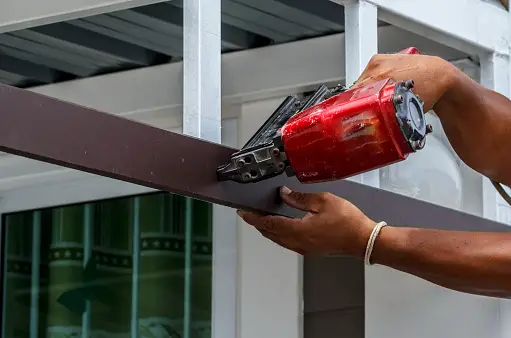Just because the temperatures are dropping doesn’t mean the work stops. Many outdoor projects must continue, regardless of how cold it is outside. So you might be wondering how much cold Milwaukee batteries can withstand and when it’s time to give up.
In total, lithium-ion batteries can maintain charge capacity in temperatures as low as -31 degrees Fahrenheit. Milwaukee batteries are designed to operate in below-freezing temperatures but may need a quick warm-up before normal use.
No matter the season, you should be able to rely on your tools to get the job done. However, sometimes, extreme weather can create conditions that can cause damage to your battery or make your tools unusable. Below, you’ll find out exactly how cold is too cold for Milwaukee batteries.
Can Milwaukee Batteries Be In the Cold?
Unlike some other battery types, Milwaukee battery packs are designed with cold weather use in mind. In fact, these batteries are built to withstand and operate in subzero temperatures, oftentimes with just a simple warm-up. But how much cold can these batteries take?
Lithium-ion batteries have been tested to operate at temperatures up to -31 degrees Fahrenheit. Theoretically, they should be able to be used no matter how cold it gets.
But that doesn’t mean they are functioning optimally.
How Does the Cold Affect Milwaukee Batteries?
No battery is capable of functioning in extreme conditions without some wear and tear. In cold temperatures, the internal resistance of the battery increases, lowering the battery’s capacity.
While this doesn’t create any direct long-term effects or damage to the battery, it does mean that you will have to charge it more often, in turn decreasing the battery’s lifespan.
Lithium batteries are designed to include a certain number of charging cycles. What this means is that the battery will slowly lose its ability to retain charge over time. While many batteries survive well past their estimated lifespan, use in winter can have the opposite effect.
Milwaukee batteries are warranted for 5 years or 2,000 charging cycles when used in optimal conditions. However, if the battery is consistently put to use in below-freezing temperatures, it will require charging more often, reducing the battery’s capacity faster.
One tip to avoid this is to allow the battery to warm up before normal use. This is done by using the tool in a light application for a short time until it is ready for normal use.
Generally, when a Milwaukee battery is too cold, you will hear a buzzing sound. When the buzzing has stopped, the battery has reached the appropriate temperature.
Is It OK to Leave Milwaukee Batteries Out In the Cold?
Now that you know lithium batteries are able to withstand the cold, you may be wondering if you can leave your Milwaukee batteries out in the cold.
While Milwaukee batteries are made to withstand use in cold temperatures, it is never a good idea to leave your lithium batteries sitting out in the cold. This can cause the battery’s capacity to lessen. Instead, they should be stored in a cool, dark place.
But don’t worry too much if you accidentally leave your battery out in the cold. Milwaukee batteries will still function, but you may notice that they lose their charge quicker than normal.
What Temperature Should I Store My Milwaukee Batteries In?
The best way to extend the lifespan of your lithium batteries is to practice safe storage.
The ideal temperature for storage is between 32 and 80 degrees Fahrenheit. You’ll also want to ensure that the area where you are keeping your battery is dry and not too humid.
Another thing to keep in mind is to clean the battery and give it a full charge before storing it. Make sure not to use any solvents or oils on the battery, as this could cause the plastic to become brittle and crack.
Can Milwaukee Batteries Be Charged In the Cold?
Charging lithium batteries in temperatures below 32 degrees Fahrenheit should always be avoided. Charging a cold battery can cause it to become less mechanically stable, making it more susceptible to sudden failure.
When charging lithium batteries in areas with cold temperatures, there are a few things to keep in mind:
- Always charge Milwaukee batteries in temperatures between 40 and 80 degrees Fahrenheit
- If your battery has been sitting in cold temperatures, always make sure to warm it up before charging
- If you are charging your battery overnight, make sure to check the temperature before going to sleep, so that you don’t wake up to a cold snap
As always, follow your battery’s manufacturer’s guide to keep it in good condition and avoid causing irreversible damage.
Final Thoughts
Hopefully, this article gave you the knowledge to use your Milwaukee battery safely and efficiently in cold weather. Though Milwaukee batteries are designed to be used in below-freezing conditions, it’s always a good idea to let them warm up before normal use.





